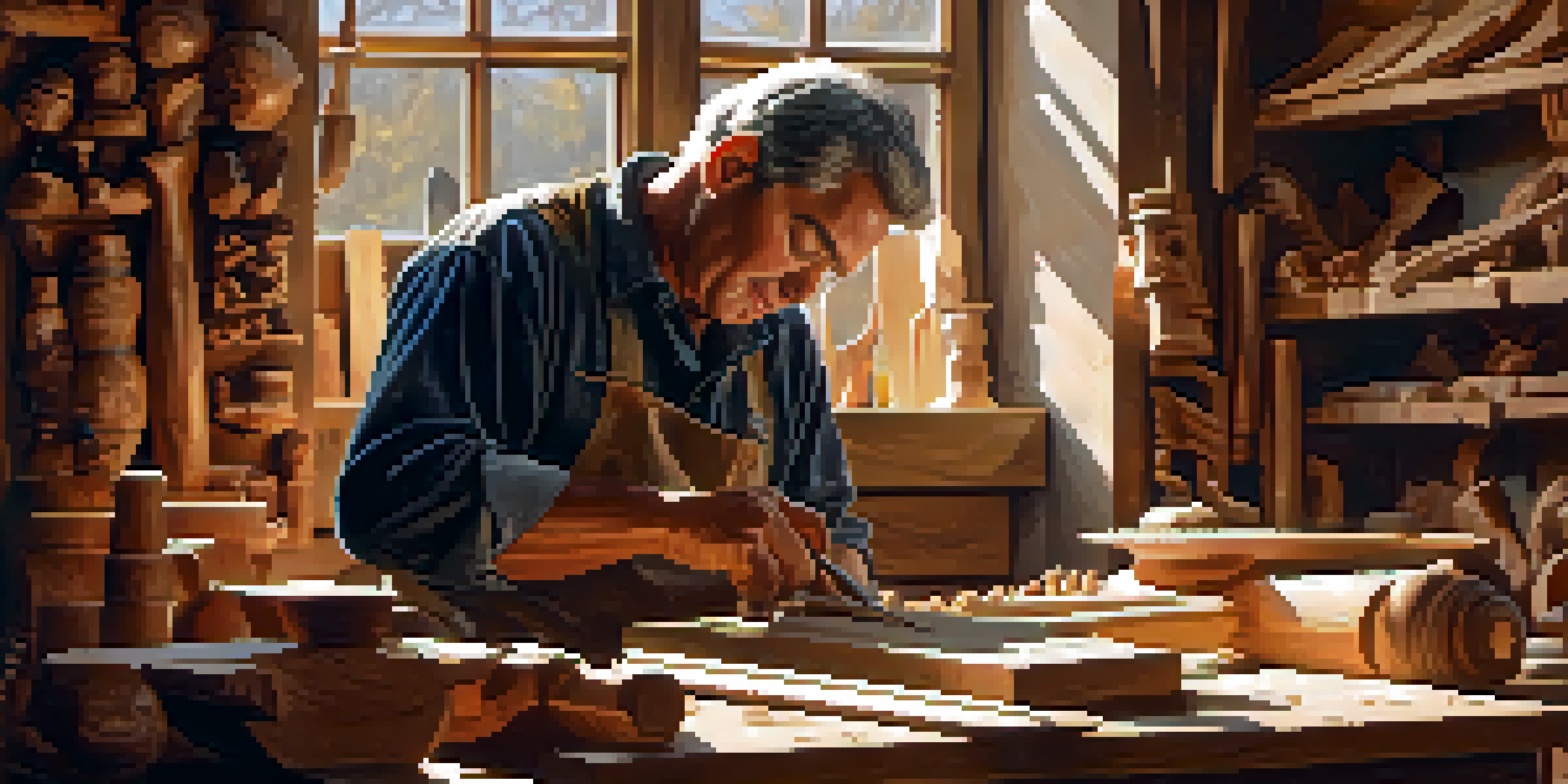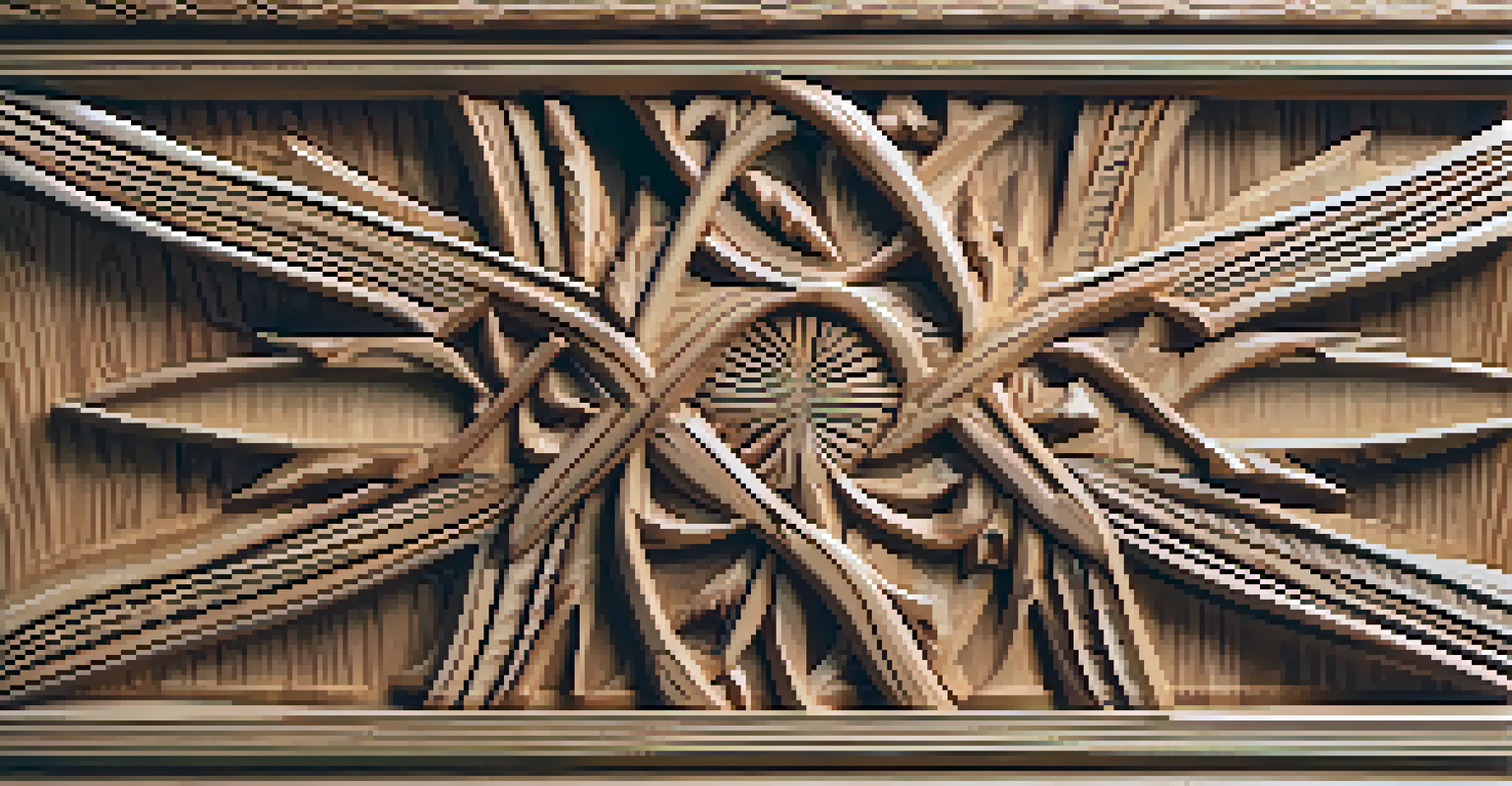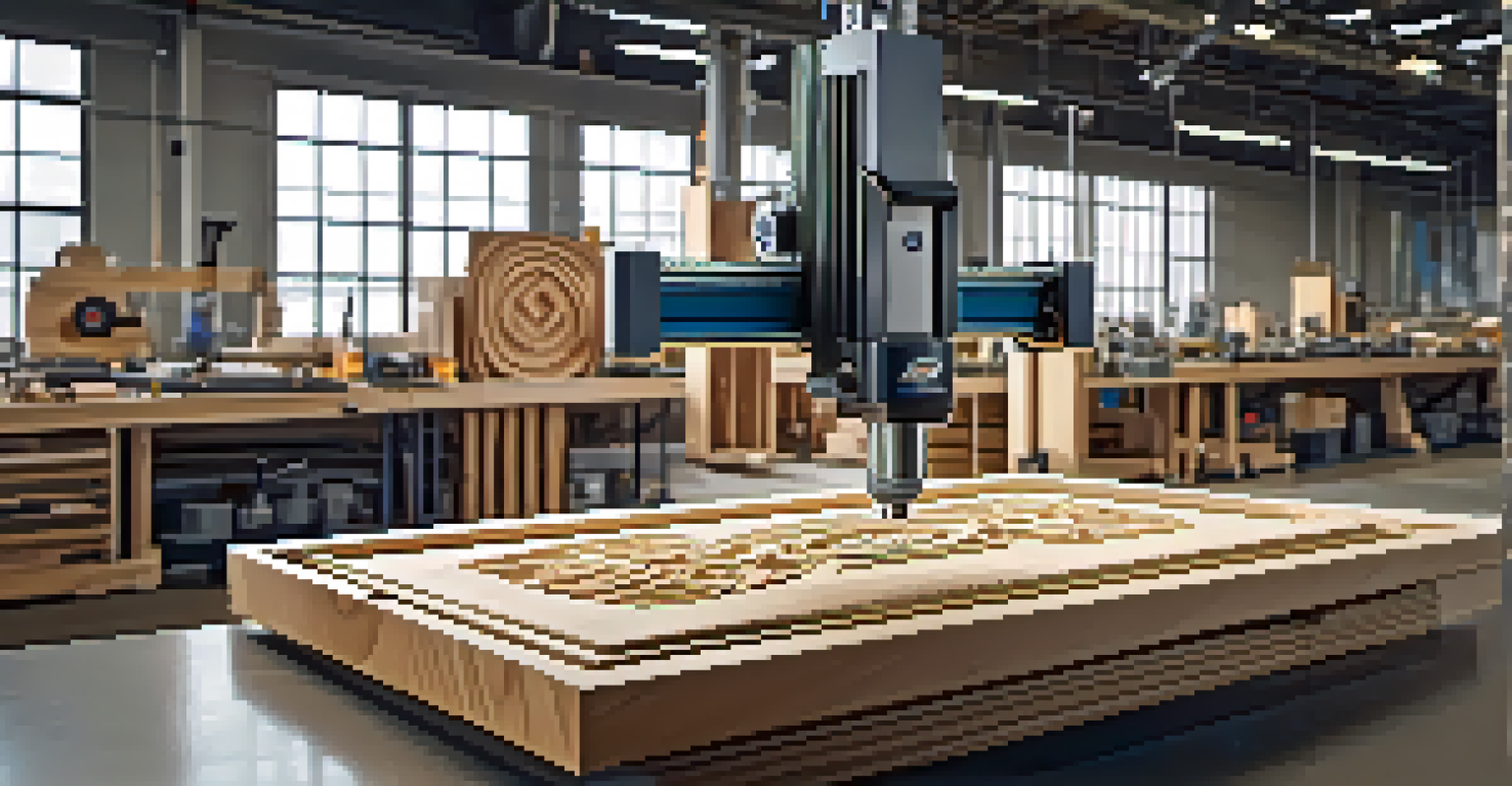From Handcrafted to Digital: The Future of Carving

The Art of Handcrafted Carving: A Time-Honored Tradition
Handcrafted carving has been a revered art form for centuries, embodying the skill and creativity of artisans. Each piece tells a story, reflecting the cultural heritage and personal touch of the carver. The meticulous process usually involves selecting the right materials, tools, and techniques, making it a labor of love.
Art is not freedom from discipline, but disciplined freedom.
Traditionally, artisans would spend years honing their craft, mastering the subtleties of wood, stone, or ivory. The tactile experience of chiseling away at a block, feeling the texture beneath their fingers, adds a unique intimacy to the process. This connection to the material is often lost in digital methods, raising questions about authenticity in art.
However, the beauty of handcrafted carving lies not just in the final product but also in the journey of creation. Each imperfection can be seen as a badge of honor, a testament to the artist's dedication. As we explore the shift to digital carving, it's essential to appreciate and respect this rich history.
The Rise of Digital Carving: Technology Meets Tradition
As technology advances, digital carving is becoming increasingly popular, offering new possibilities for artists and designers. Tools like CNC (Computer Numerical Control) machines allow for precision that can be challenging to achieve by hand. This blend of technology with artistry opens up a world of creative potential, allowing for intricate designs that were once unimaginable.

Digital carving enables artists to experiment with complex geometries and patterns, pushing the boundaries of traditional techniques. For instance, a designer can create a model on software, make adjustments in real-time, and produce an exact replica with a CNC machine. This efficiency not only saves time but also reduces material waste, making it a more sustainable option.
Handcrafted vs. Digital Carving
The coexistence of traditional handcrafted carving and modern digital methods enriches the art form, blending creativity with efficiency.
However, the transition to digital doesn't come without its challenges. There's a learning curve associated with mastering software and machinery, which can be daunting for traditional artisans. Striking a balance between embracing technology and preserving the essence of handcrafted work is vital for the future of carving.
The Benefits of Digital Carving: Efficiency and Precision
One of the most significant advantages of digital carving is its efficiency. Artists can produce designs quickly and replicate them with minimal effort, which is invaluable for large-scale projects. This rapid production capability is particularly beneficial in industries such as furniture making and architectural design, where time is often of the essence.
The artist's job is to be a witness to his time in history.
Precision is another hallmark of digital carving. Unlike hand-carving, where slight variations can occur, digital tools can achieve incredibly tight tolerances, ensuring that every cut is uniform. This level of accuracy is crucial in applications like prototyping, where exact specifications need to be met for a successful outcome.
Moreover, digital carving allows for easy modifications and iterations, enabling designers to explore multiple concepts without starting from scratch. This flexibility fosters creativity, encouraging artists to push the envelope and experiment with new ideas, ultimately enriching the art of carving.
Combining Handcrafted Techniques with Digital Tools
Rather than viewing digital carving as a replacement for traditional methods, many artisans are finding ways to integrate both approaches. For instance, an artist might start with a hand-carved piece and then use digital tools to enhance or replicate it. This hybrid method allows for a personal touch while still benefiting from the efficiencies of technology.
Combining these techniques can also lead to innovative designs that honor the past while embracing the future. Imagine a beautifully crafted wooden sculpture that features intricate digital engravings, marrying the tactile warmth of handwork with the sharp precision of digital design. This fusion can create a unique aesthetic that appeals to a broader audience.
Education Shapes Future Artists
Integrating both traditional and digital carving techniques in education fosters a well-rounded understanding and innovation among emerging artists.
The art world is increasingly recognizing the value of such collaborations, prompting workshops and courses that teach both handcrafting and digital skills. By nurturing this cross-pollination of techniques, artists can expand their repertoire and keep the spirit of carving alive in a modern context.
The Role of Education in the Future of Carving
Education plays a crucial role in shaping the future of carving, as it equips the next generation of artists with the skills they need to thrive. Schools and workshops that focus on both traditional and digital carving techniques are essential for fostering a well-rounded understanding of the craft. By learning the history and techniques of hand-carving, students can appreciate and respect its significance.
Furthermore, integrating technology into carving education allows students to explore a range of possibilities. Workshops that offer hands-on experience with CNC machines and design software can empower emerging artists to innovate and express their creativity in new ways. This dual approach prepares them for a diverse range of career opportunities in the art and design fields.
In addition, mentorship programs that connect seasoned artisans with novices can facilitate the transfer of knowledge and skills. These relationships can inspire a deeper connection to the craft, ensuring that the art of carving—both handcrafted and digital—continues to evolve and thrive.
The Impact of Digital Carving on the Art Market
As digital carving gains traction, its impact on the art market becomes increasingly evident. Collectors and galleries are beginning to embrace digital art forms, recognizing the value of unique pieces created with advanced technology. This shift opens up new avenues for artists, allowing them to reach wider audiences and gain recognition in a rapidly changing landscape.
Moreover, digital carving can facilitate the creation of affordable art. With the ability to produce multiple copies of a design, artists can offer their work at various price points, making it accessible to a broader range of collectors. This democratization of art can encourage more people to engage with and appreciate carving as an art form.
Digital Carving's Market Impact
The rise of digital carving is transforming the art market, making art more accessible while also raising questions about authenticity.
However, this new market also raises questions about authenticity and originality. As digital reproductions become more common, distinguishing between original pieces and copies can be challenging. Artists and collectors alike must navigate these complexities to ensure that the integrity of the art remains intact.
Looking Ahead: The Future of Carving in a Digital Age
The future of carving appears bright as technology continues to evolve, merging seamlessly with traditional methods. Artists are finding innovative ways to express their creativity, and the combination of handcrafted techniques with digital tools is leading to exciting new possibilities. This dynamic landscape fosters a spirit of experimentation, inviting artists to push boundaries and explore their unique visions.
Furthermore, as sustainability becomes a growing concern, digital carving offers eco-friendly solutions that traditional methods may lack. The ability to minimize waste and optimize resources aligns with a broader movement toward responsible art-making that resonates with both artists and collectors.

Ultimately, the future of carving doesn't have to be a choice between handcrafted and digital. Instead, it offers a rich tapestry of expression, where both methods coexist and elevate one another. By embracing this evolution, we can celebrate the art of carving in all its forms, ensuring that it continues to inspire and captivate for generations to come.